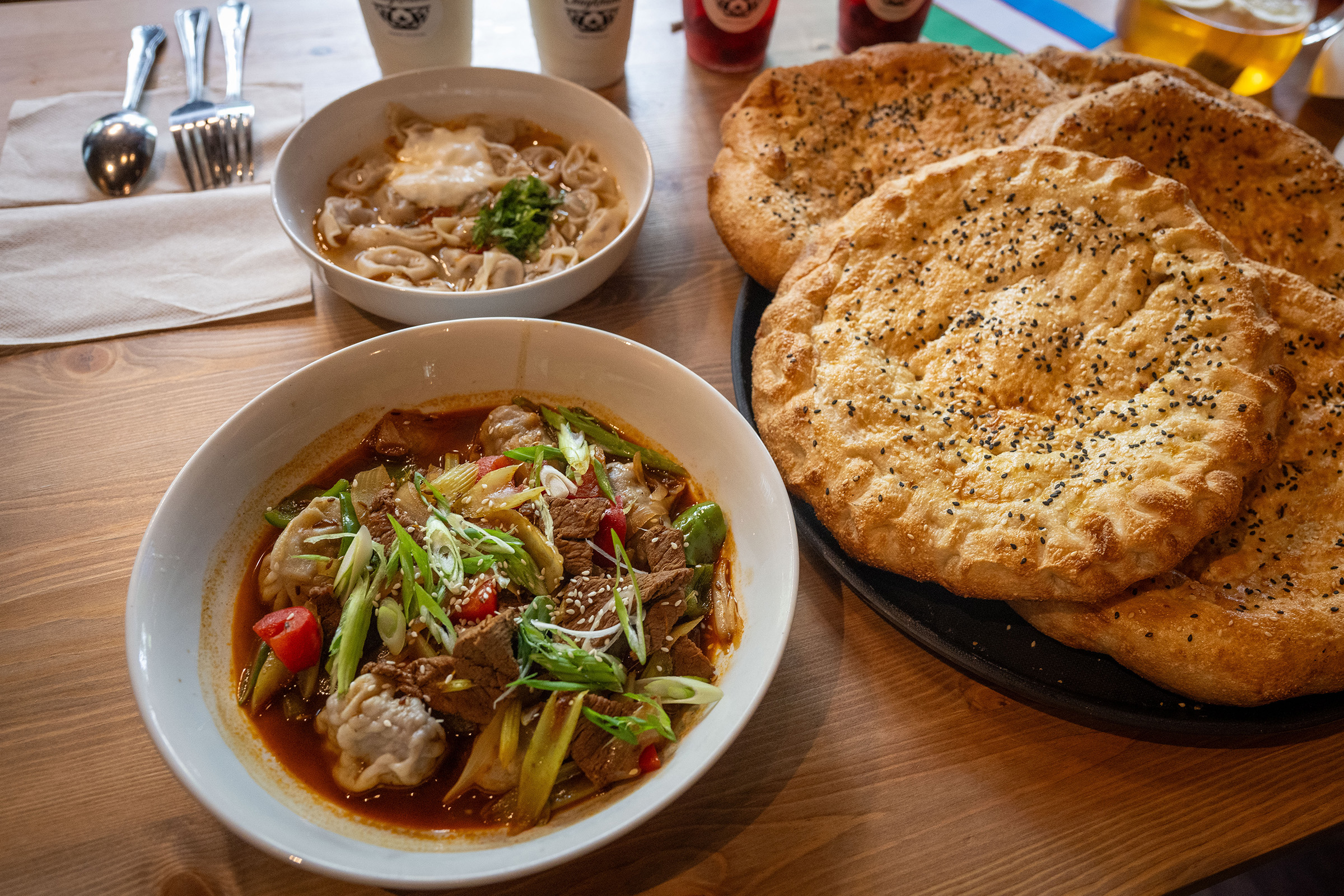
LOADING


Potatoes have entered the dumplings chat.
The dependable tuber is the primary filling in vareniki, buttery, half-moon dumplings often served with tangy sour cream. Though they might initially remind you of pierogi, vareniki have distinct characteristics.
Restaurants serving our favorite Uzbek and Afghan dumplingsHow to make mantu dumplings at home
Kavsar, an Uzbek restaurant on Mount Washington, serves silky vareniki with thinner skins than the Eastern European (and Pittsburgh) crowd-pleaser, more like what you'd get in a Chinese wonton.
The Russian-influenced dumpling's stuffing is slimmer than the filling in a pierogi, and they won't come mixed with cheese or sauerkraut. They do, however, introduce carb-on-carb delight to our geographic exploration of dumplings in Pittsburgh.
The dumplings we see in Central Asia are hearty. It’s a team player but often remains the leader of the pack, supported by the most hardy, dairy-rich accompaniment we’ve encountered so far — sour cream and its best friend, dill.
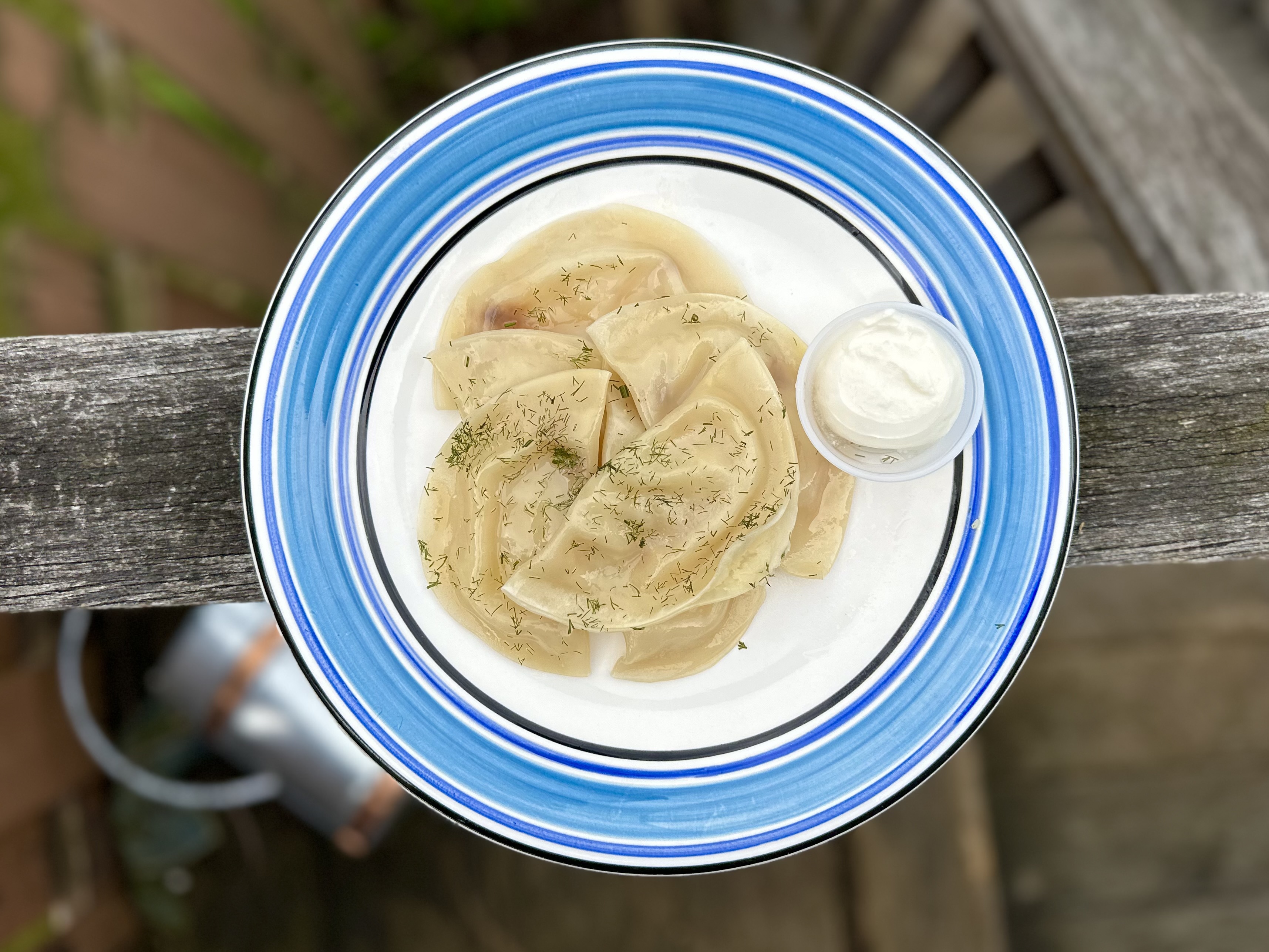
In Uzbek restaurants like Kavsar, dumplings play a starring role in soups. Five miles down the road in Carnegie, dumplings take on the quarterback role at Afghan Kabab House, where they help form a complete meal topped with lentils, tomato sauce, yogurt and herbs.
Uzbek immigrants and refugees from Afghanistan are the region’s newest communities of dumpling makers. Nearly all have settled in the region in the 2020s, and they are just now beginning to introduce their Central Asian food cultures to Pittsburgh.
There are just a handful of Uzbek restaurants (though quite a few Uzbek-owned pizza places) and only one Afghan-owned restaurant (plus a catering company, Zafaron), with another, Afghan Kabab And Pizza House, soon to open in Blawnox.
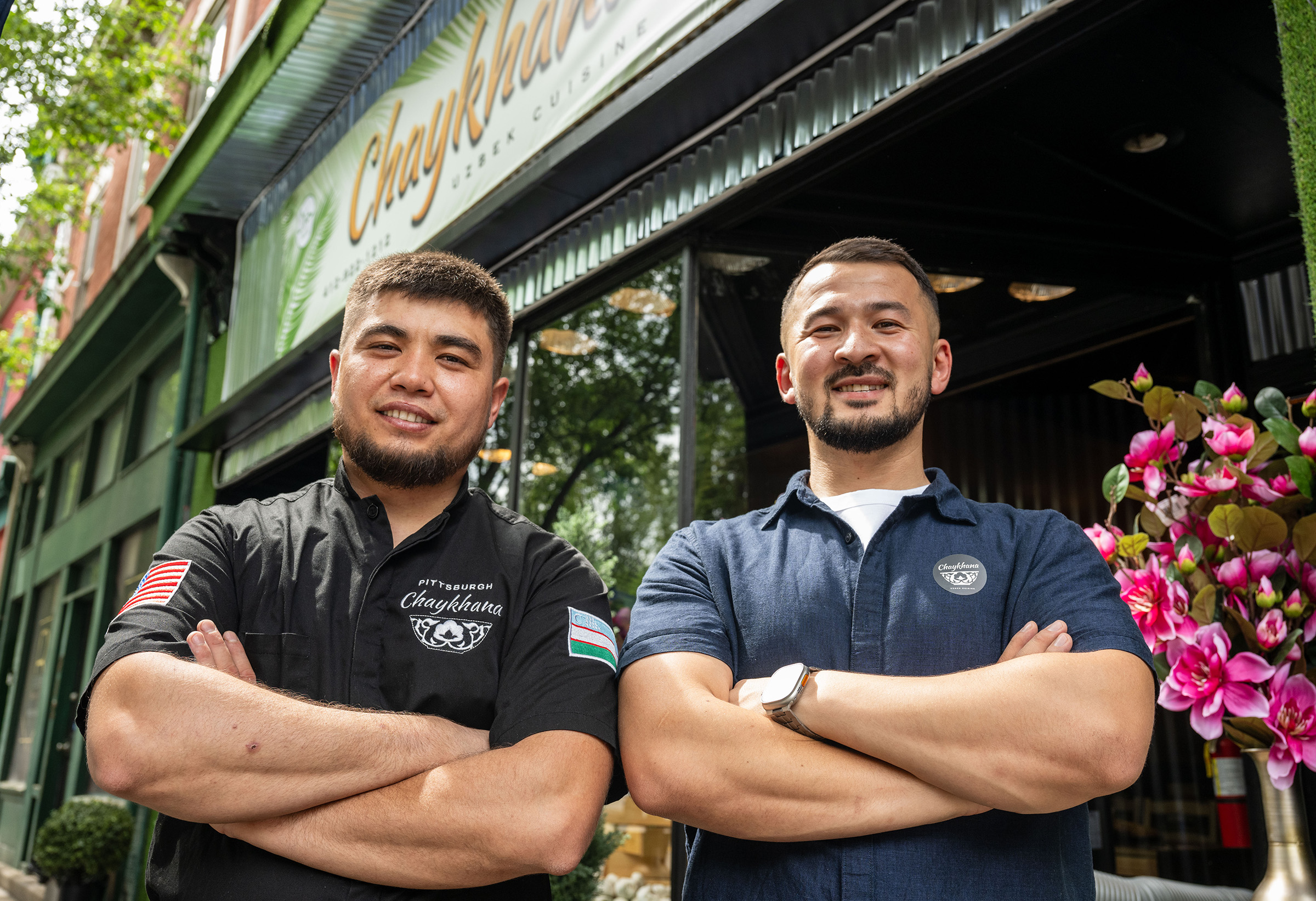
The options are limited but the quality is stellar, as is the focus on hospitality.
“Sharing our traditional foods and giving Pittsburgh the taste of Uzbek cuisine and our versions of dumplings, spiced with great-quality imported spices, which gives it a unique taste, makes me very proud and happy,” says Sarvar Abdurashidov, owner of Chaykhana Pittsburgh in the West End.
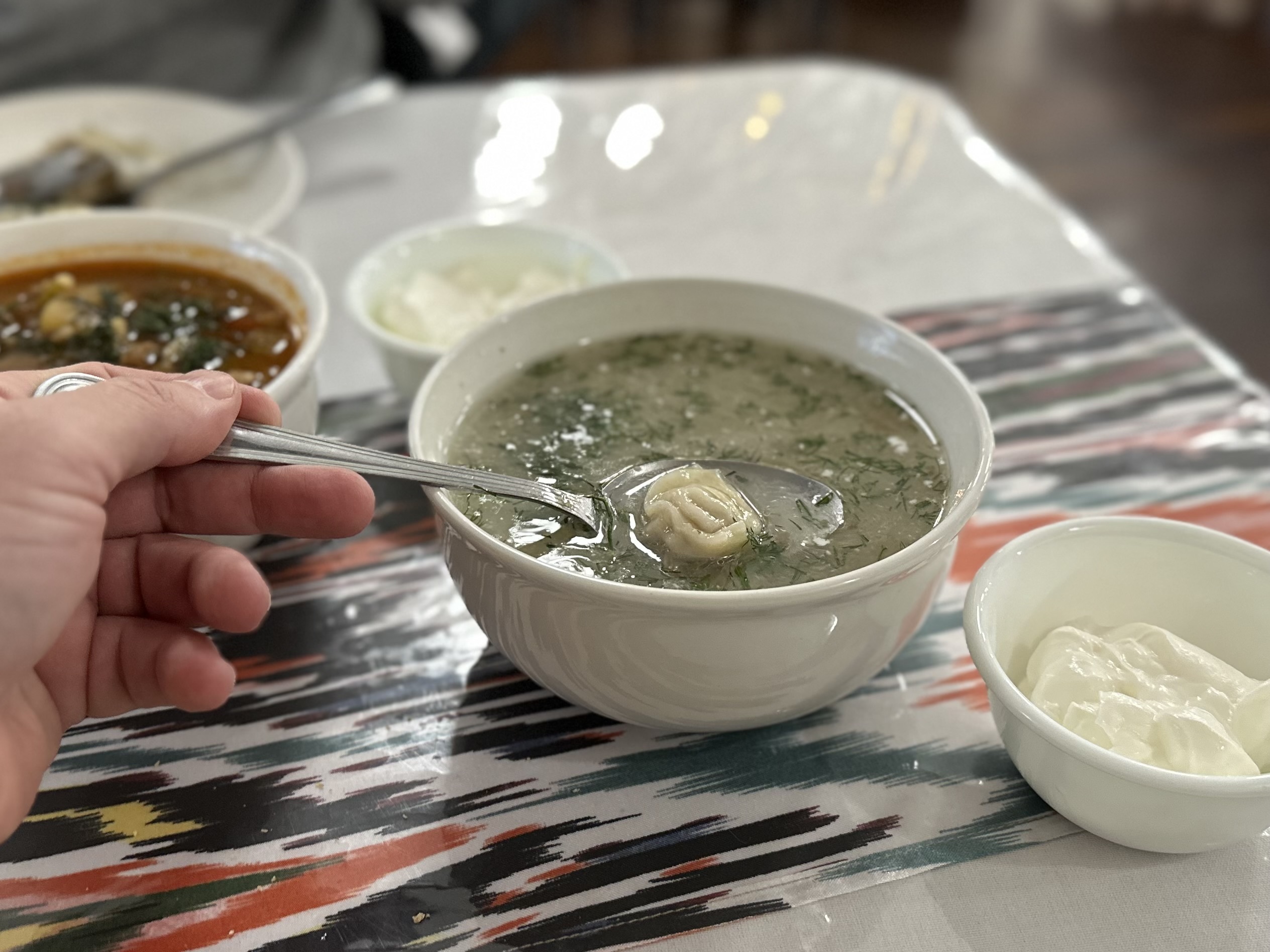
Few countries in the world embody the breadth of multicultural, geographic culinary influence as the cuisine of Uzbekistan, which for approximately 1,400 years sat at the heart of the trade route known as the Silk Road and later as a population within both the Russian Empire and Soviet Union.
“Uzbekistan has many varieties of dumplings, which were drawn from many different influencers,” Abdurashidov says. “Once Uzbekistan was introduced to dumplings, they customized it to their taste using special Uzbek spices, and right after it became popular as an Uzbek cuisine.”
He says the dumplings you find in his and other restaurants were introduced from China via Uyghur and Dungan settlers, who spread across parts of Central Asia (though dumplings certainly were part of the street food culture of the Silk Road trade routes prior to that), and were later influenced by Russia and various European countries.
“This is the food of Central Asia. We have influence from dumplings in China, but we use very different things to stuff them with. We have drawn from many influences from many places to make our cuisine,” says Sultonmurod Dshbulatov, co-owner of the Downtown Uzbek restaurant Pizza Bari.
Hayrullo Umaraliev and Tahmina Umaralieva opened Kavsar in 2014 as Pittsburgh’s first Uzbek restaurant. Although the city’s Uzbek population was minuscule then, its menu drew diners from south-central Russia (including Pittsburgh Penguins superstar Evgeni Malkin) and its former satellite states craving a taste of home.
Abdurashidov and Dshbulatov opened their operations as pizza shops in the early 2020s, hoping an all-halal menu would distinguish them in a crowded field. With an influx of ethnic Uzbek moving to Pittsburgh over the last two years — Abdurashidov estimates the number is as high as 4,000 and growing — both operators decided last year to add extensive menus featuring the cuisine of their homeland.
“Now I am running an Uzbek restaurant that has many varieties of dumplings and other traditional food that gives comfort, home taste and happiness,” Abdurashidov says.
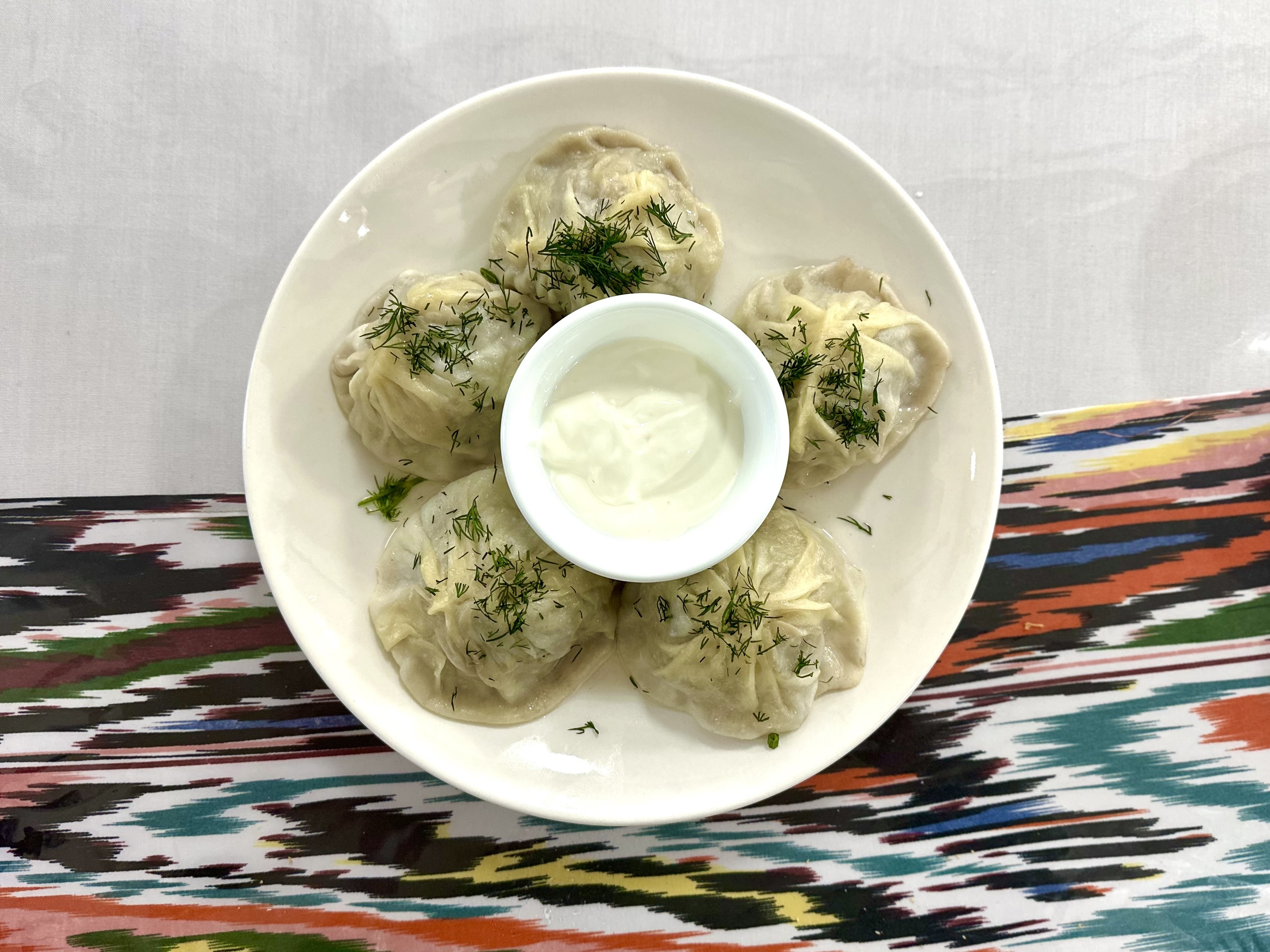
Manti is the signature dumpling of Uzbekistan. The fist-sized knife-and-forkers are the most oversized dumplings we see on Pittsburgh’s dumpling trail.
“Juicy, juicy, juicy, that’s the most important thing,” says Dshbulatov. “The skins must be nice and thin, which gives them the best texture.”
Abdurashidov says the manti are prepared with a tough, low-hydration dough. While it rests, they hand chop beef, dice onions and season the blend with spices and herbs from Uzbekistan. The rested dough is portioned, rolled into large circles and stuffed. It’s sealed at the top using a signature braiding technique, though you’ll find distinctions in form at each restaurant. Manti are steamed for 45 minutes in a layered pot called a kaskan.
The manti at each of Pittsburgh’s Uzbek restaurants reflect the hands that make them. Chaykhana’s are deeply savory, with a fine, even chop to the meat mixture. Pizza Bari fills its manti with a rougher chop, offering something akin to what you might find at a roadside country restaurant. Kavsar’s are the most refined, with a soft sweetness emerging from a blend of caramelized red onions and cumin.
Chuchvara and pelmeni, similar in shape to tortellini, can be as small as a marble, but typically are around the size of a quarter. They draw their most direct influence in form from eastern Russian cuisine, yet, like all Uzbek dumplings, are unique in how they are filled and seasoned.
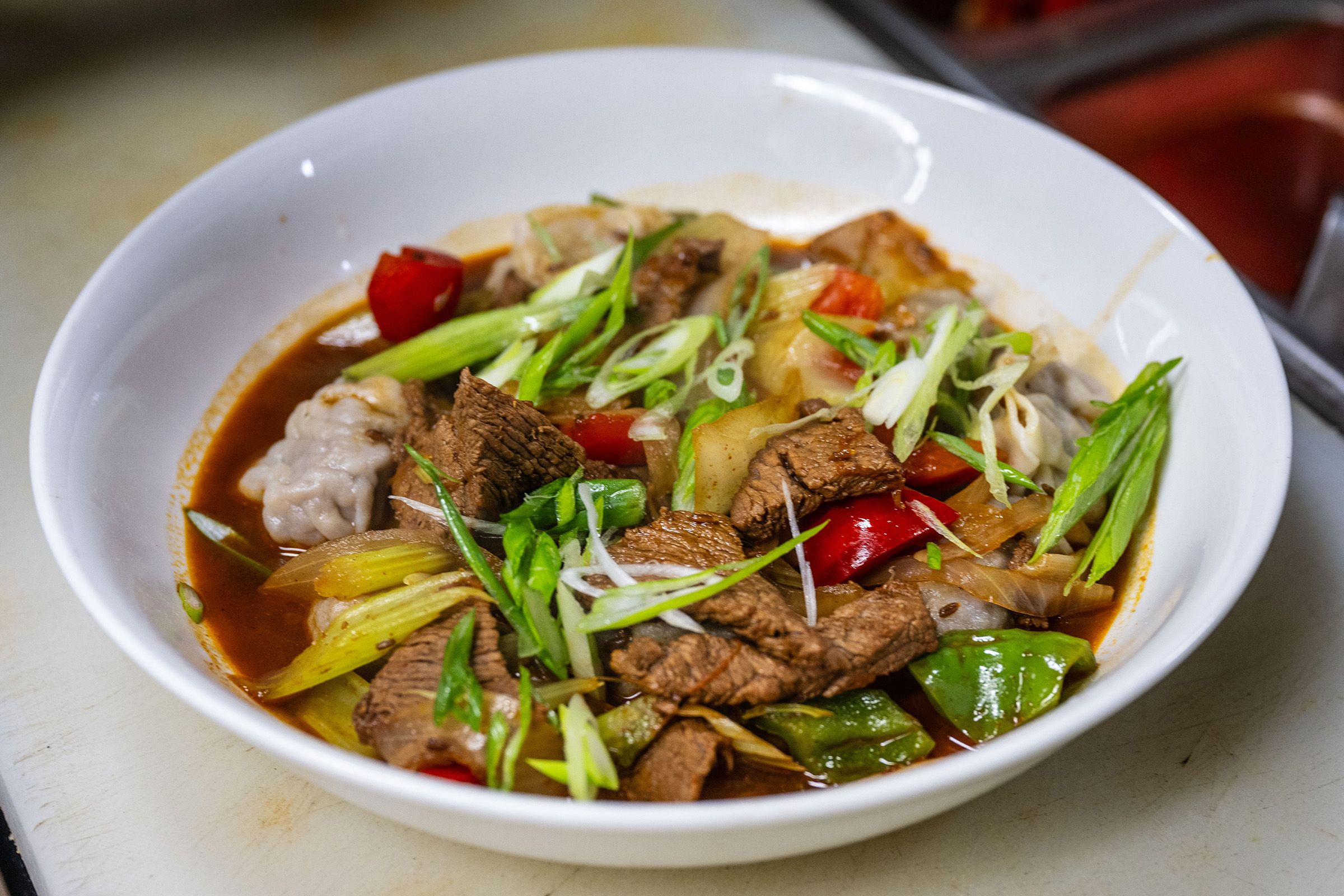
Generally speaking, manti’s diminutive cousins are referred to as pelmeni when served straight up with sour cream, black pepper and dill — as in a meal on a Siberian dinner table — and as chuchvara when served in soup. However, those distinctions tend to fade away at Pittsburgh restaurants.
“We put our dumplings in soups, too, because soup is very essential to our food,” says Dshbulatov.
At Pizza Bari, which Dshbulatov co-owns with Khurshid Toshpulatov, the petite dumplings are prepared with a doughier, thicker wrapper, adding a meaty-oniony punch to a herby bowl of lamb broth.
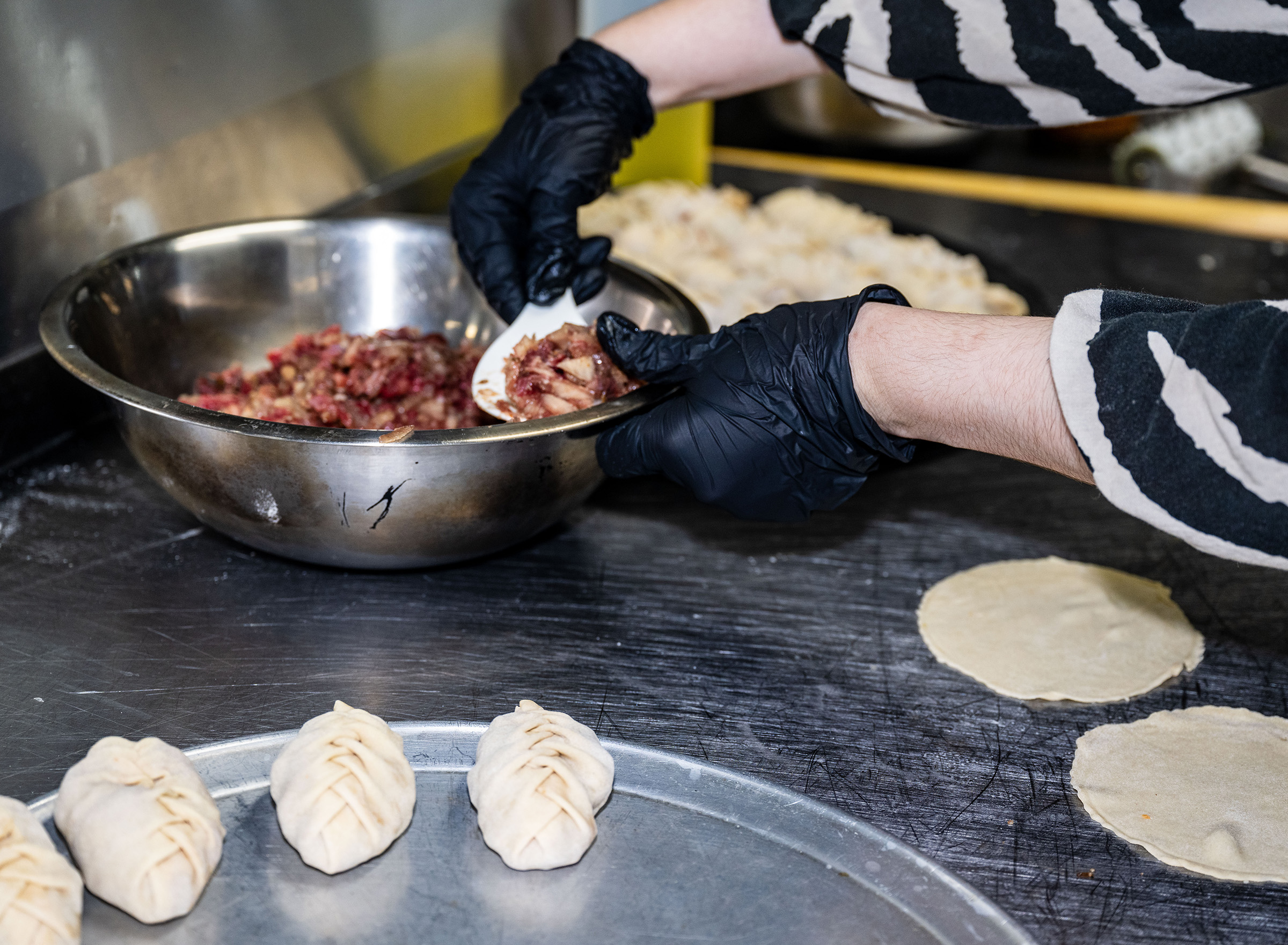
“This feels like grandpa cooking. It’s straightforward, but layered. So satisfying,” a friend said on a chilly April afternoon.
Chaykhana’s pelmeni soup is a dill-y dream. Ultra-tender dumplings take on a silky texture as they inhale the Turkic-style chicken broth. The thin-skinned dumplings’ high stuffing-to-wrapper ratio gives the umami-powered filling a chance to shine and adds depth of flavor to the broth.
The West End restaurant also offers chuchvara in a soup called mastava. The chewy, tightly wrapped dumplings swim in a bright, light, tangy beef broth buoyed by bell peppers and scallions alongside tender-tough cuts of meat. It all combines for a deeply satisfying balance of textures.
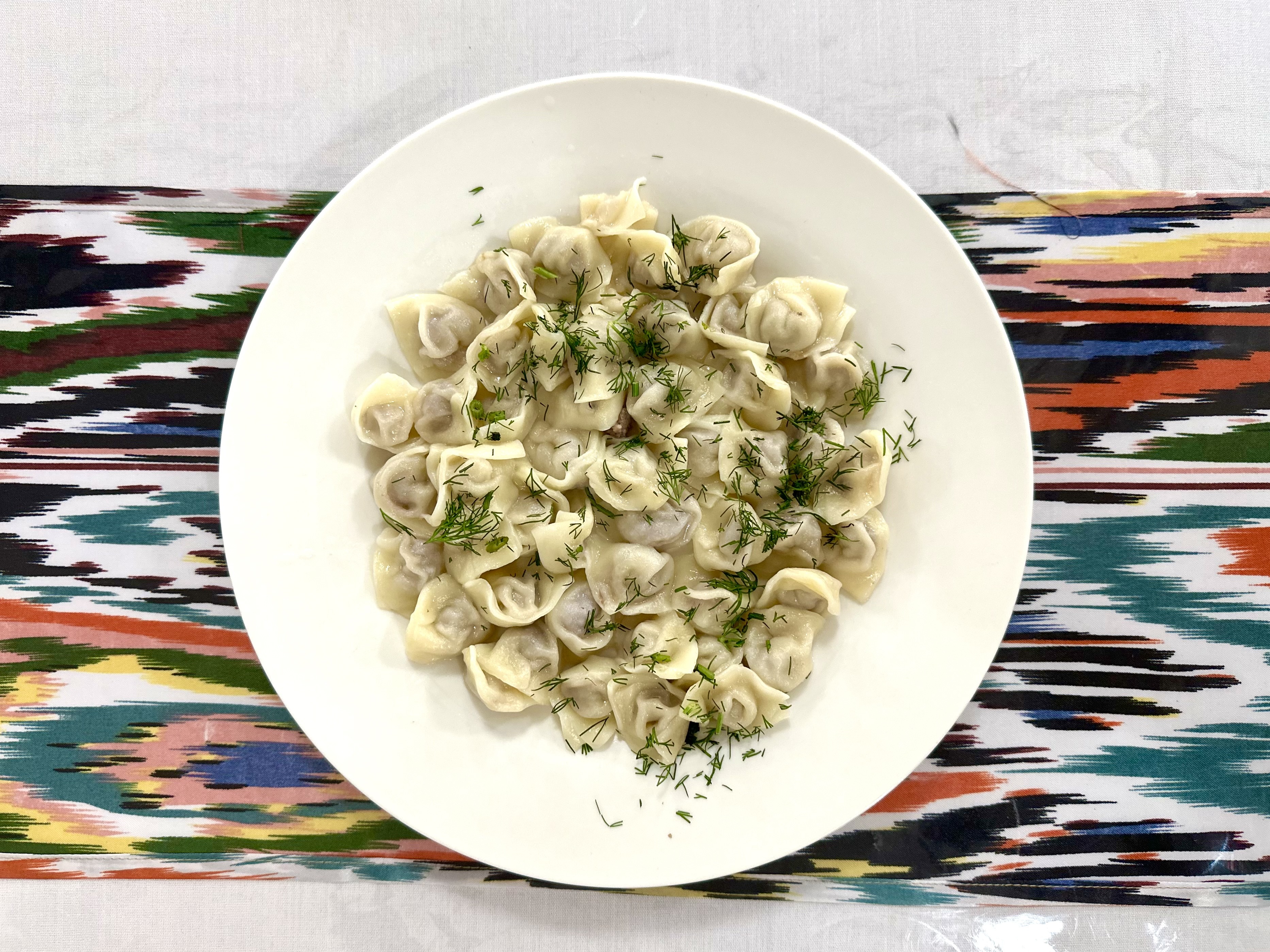
Kavsar might be Pittsburgh’s most soup-rich restaurant (arguably serving the city’s best borscht). Dumplings come in and out of rotation depending on what’s offered daily. Chuchvara in “broth soup” is standard; its juicy dumplings floating in mild beef broth resonate with the international language of comfort food.
“People from everywhere should come try this, especially if they haven’t before. This is food that makes people very happy,” says Odil Mirsoatov, a Pizza Bari employee who moved to Pittsburgh last year because he heard good things about living here from his sister.
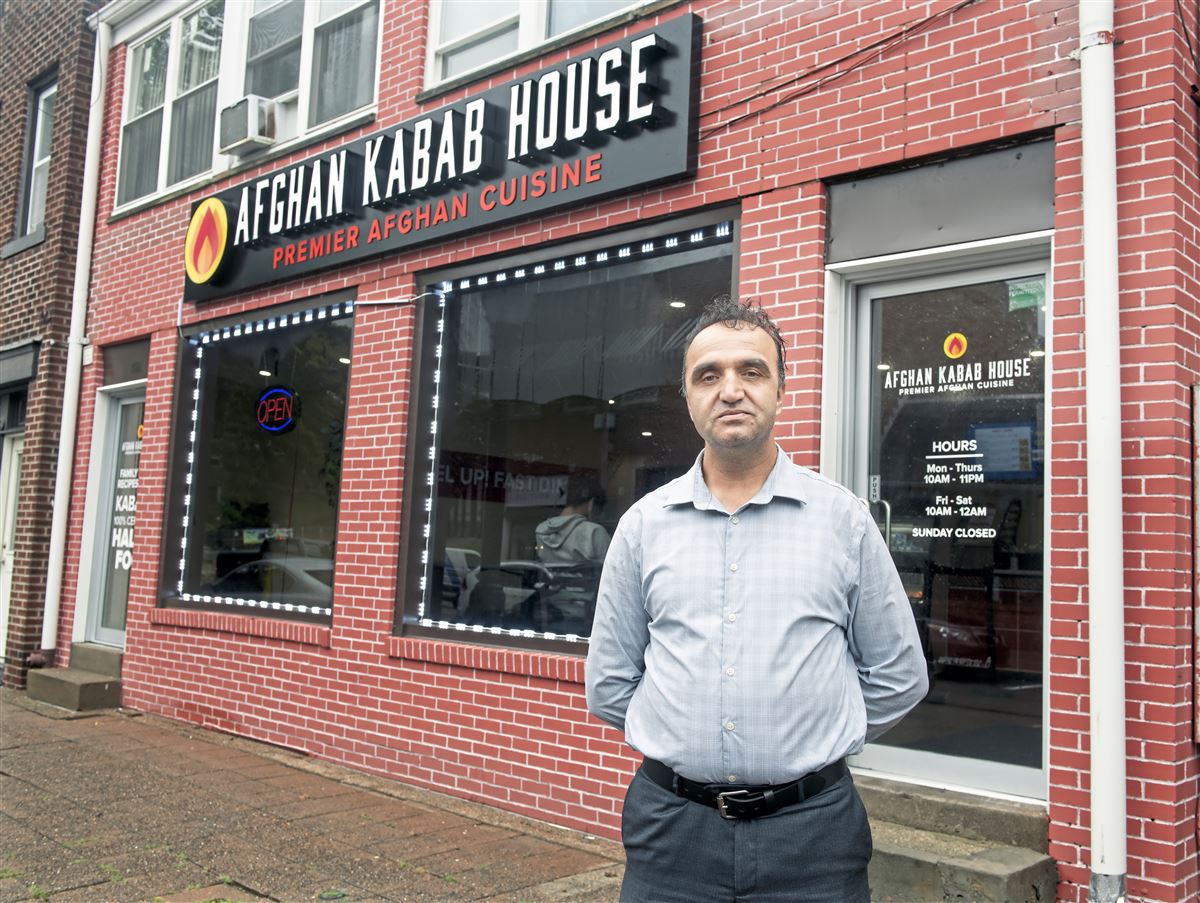
More than 80,000 people were evacuated from Afghanistan to the United States following the withdrawal of U.S. troops in 2021; approximately 400 were settled in Pittsburgh.
“Since then we’ve continued to welcome people from Afghanistan,” says Dana Gold, chief operations officer for Jewish Family and Community Services, one of several organizations that aids refugees who resettle in the region.
Gold estimates that around 1,500 people have arrived in Pittsburgh over the past three years to join the city’s small established Afghan community.
Much like Uzbek cuisine, Afghanistan’s food culture reflects its broad geography and regional influences, primarily those of Persian culinary history.
With a population so new to a locality, the country’s representation in Pittsburgh restaurants is still in its infancy. As that changes, Gold sees the extension of Afghan cuisine as an opportunity to broaden the dominant narrative of Afghanistan as a war torn country to one of a rich tapestry woven by the people with roots there.
“We experience life and culture through our taste buds. When you eat something new, you might wonder what kind of flour is used in a dumpling or what kind of spice it’s seasoned with. It creates a sense of shared experience because everybody loves a good meal. It opens the door to curiosity,” she says.
Among the Afghan nationals here already was Abdul Wahid Tabee. As the Post-Gazette reported in 2021, the former radio journalist came to Pittsburgh in 2015 to flee the war-torn country for his work at Radio Bayan, promoting peace and education for women and serving as a cultural adviser to the U.S. military.
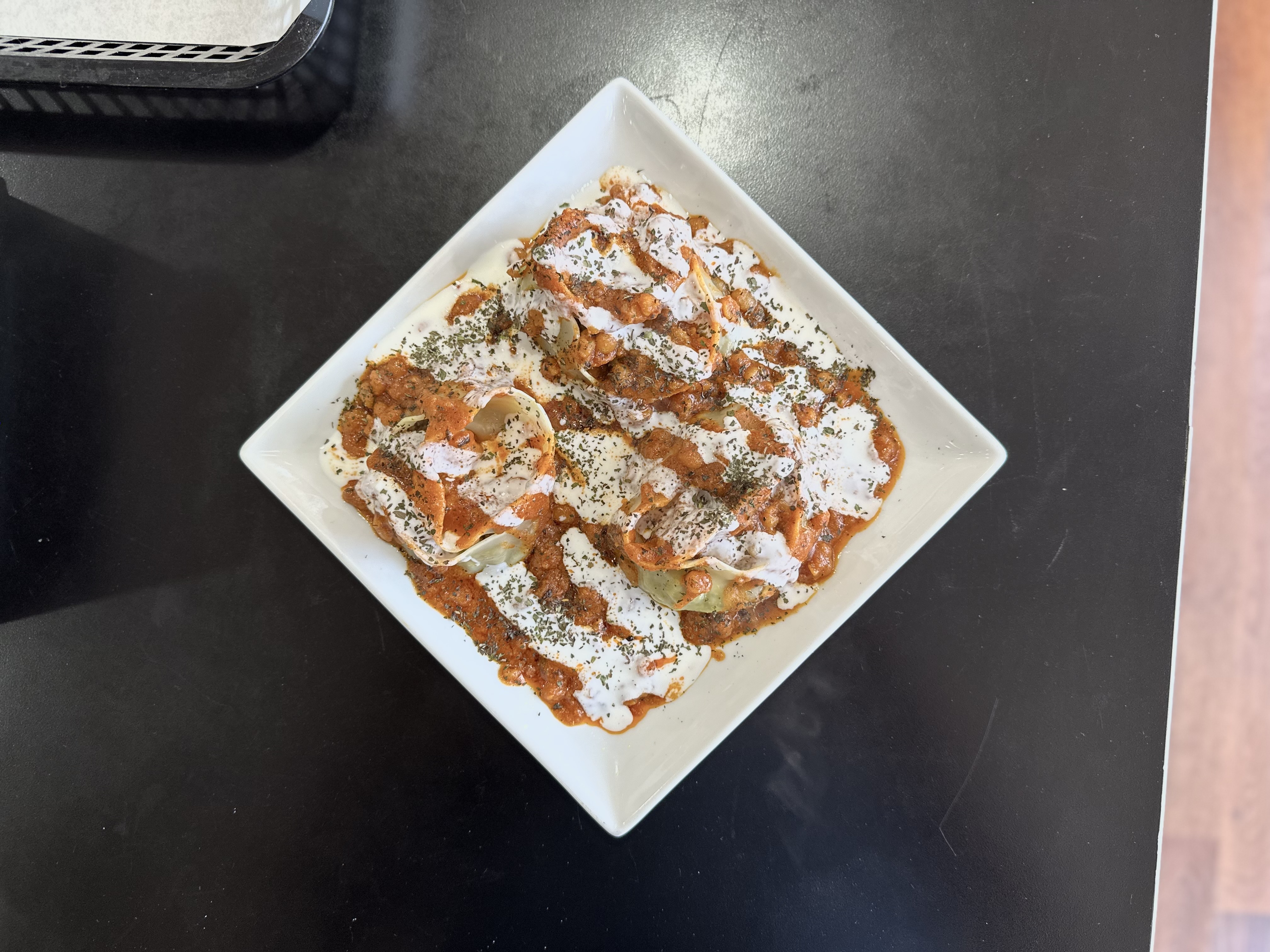
In 2021, he partnered with Shorif Rahman of Shah’s Halal Food (an offshoot of the New York-based brand NYC Halal Food) to open Afghan Kabab House in Carnegie. His wife, Gul Ghoati, serves as the restaurant’s primary chef.
Mantu are the nation’s signature dumplings, and there are only two places to get them in Pittsburgh – Afghan Kabab House and Aria Persian Cuisine, which shares a kitchen with a Turkish restaurant in Oakland.
Ghoati’s mantu at Kabab House appear like miniature volcanoes, with double wrappers folded over a blend of finely chopped, gorgeously seasoned juicy meat. Once steamed, they are thicker at the bottom and nearly translucent on the sides, adding a textural adventure to the mix.
They are topped with a hefty helping of lentils and dressed with yogurt, oregano and a pleasingly oily tomato sauce, turning the dumplings into the primary player of a complete meal. Notes of garlic, turmeric, cumin and coriander permeate the plate, bringing this balanced, luscious dish deeper into a world of craveable dumplings.
“We are offering our food so that people who miss their home country can feel connected,” Pizza Bari's Dshbulatov says. “And we offer our food so that everyone can experience and share it no matter where they are from.”
Hal B. Klein: hklein@post-gazette.com
Where to get Uzbek and Afghan dumplings in Pittsburgh
There are just a handful of restaurants in Pittsburgh offering Uzbek and Afghan cuisine. All, however, offer delicious renditions of their respective country’s dishes, particularly their dumplings. All of the restaurants on this list are 100% halal.
Kavsar
Hayrullo Umaraliev and Tahmina Umaralieva opened Pittsburgh’s first Uzbek restaurant in 2014. Kavsar offers one of the deepest selections of dumplings in Pittsburgh, running the gamut of Uzbek classics including juicy manti, bold chuchvara in a light dill broth and a soft, potato-filled vareniki. Round out your selections with a soup or two from the takeout- and delivery-only establishment’s offerings. (We love the borscht.)
16 Southern Ave., Mount Washington; kavsar.info
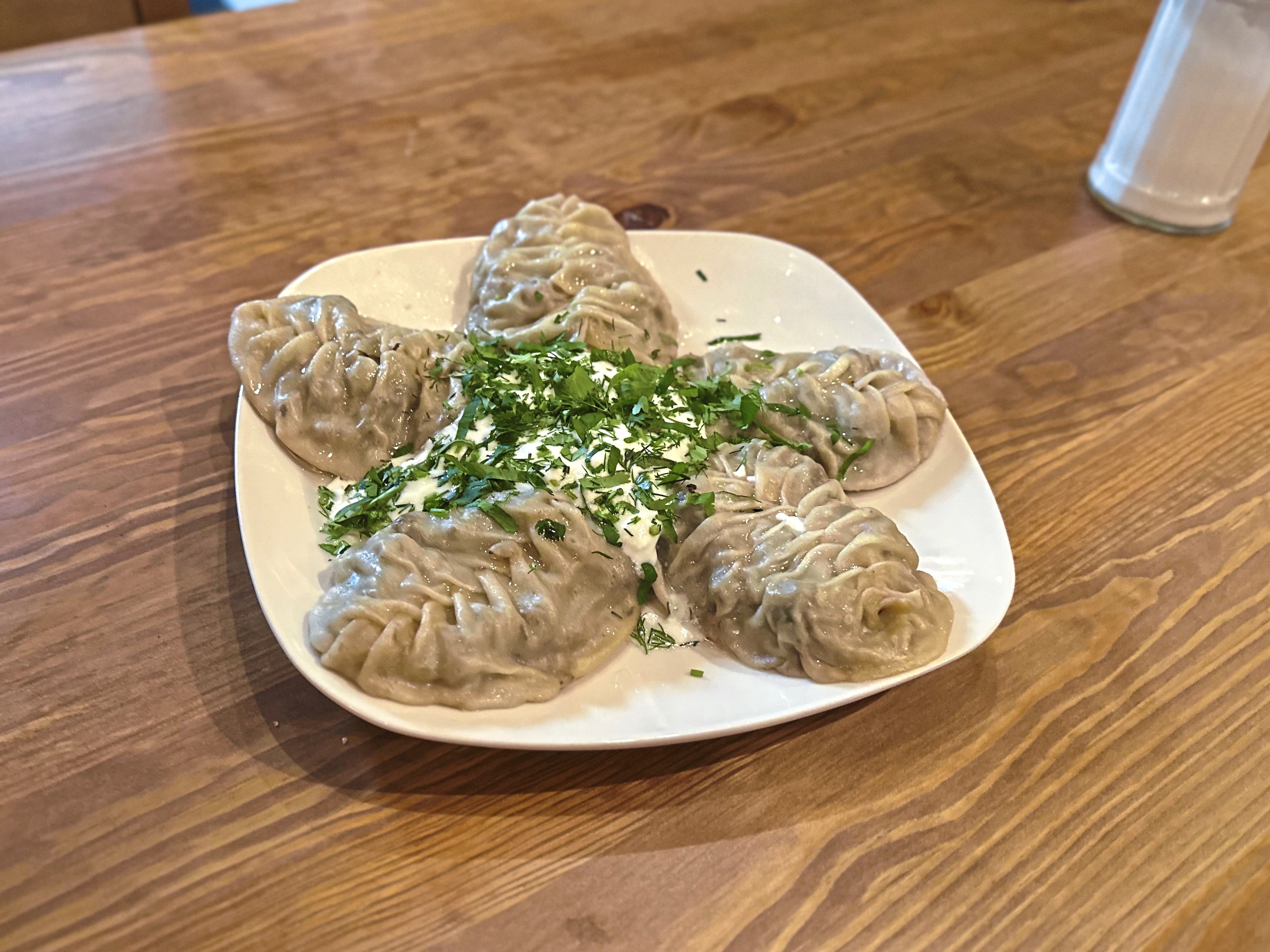
Chaykhana Pittsburgh
Pittsburgh’s newest Uzbek restaurant came onto the scene in late 2023, when owner Sarvar Abdurashidov decided to refurbish his pizza parlor, Bella Monte, into a haven for the foodways (and for those that miss them) from his native country.
Among the highlights of the still-growing menu are sturdy, savory manti and light, uplifting pelmeni soup. Looking for a dumpling that’s not quite a dumpling? Go for honim. Layers of lacy dumpling wrapper intertwine with a potato and beef filling, topped with a sweet-ish pepper and tomato sauce; it’s all a bit like the stuffed cabbage of dumplings.
410 S. Main St., West End; instagram.com/chaykhanapittsburgh
Pizza Bari
Khurshid Toshpulatov and Sultonmurod Dshbulatov opened Pizza Bari as an all-halal pizza joint intending to cater to Pittsburghers who follow Islamic dietary principles. Even now, you’ll have to visit the Downtown establishment to find the restaurant’s terrific Uzbek menu.
Dumplings are offered in a number of ways, including a rustic take on manti and a version of chuchvara in lamb broth that is among Pittsburgh’s best comfort foods. The pizza is pretty good, too.
955 Liberty Ave., Downtown; pizzabaripgh.com
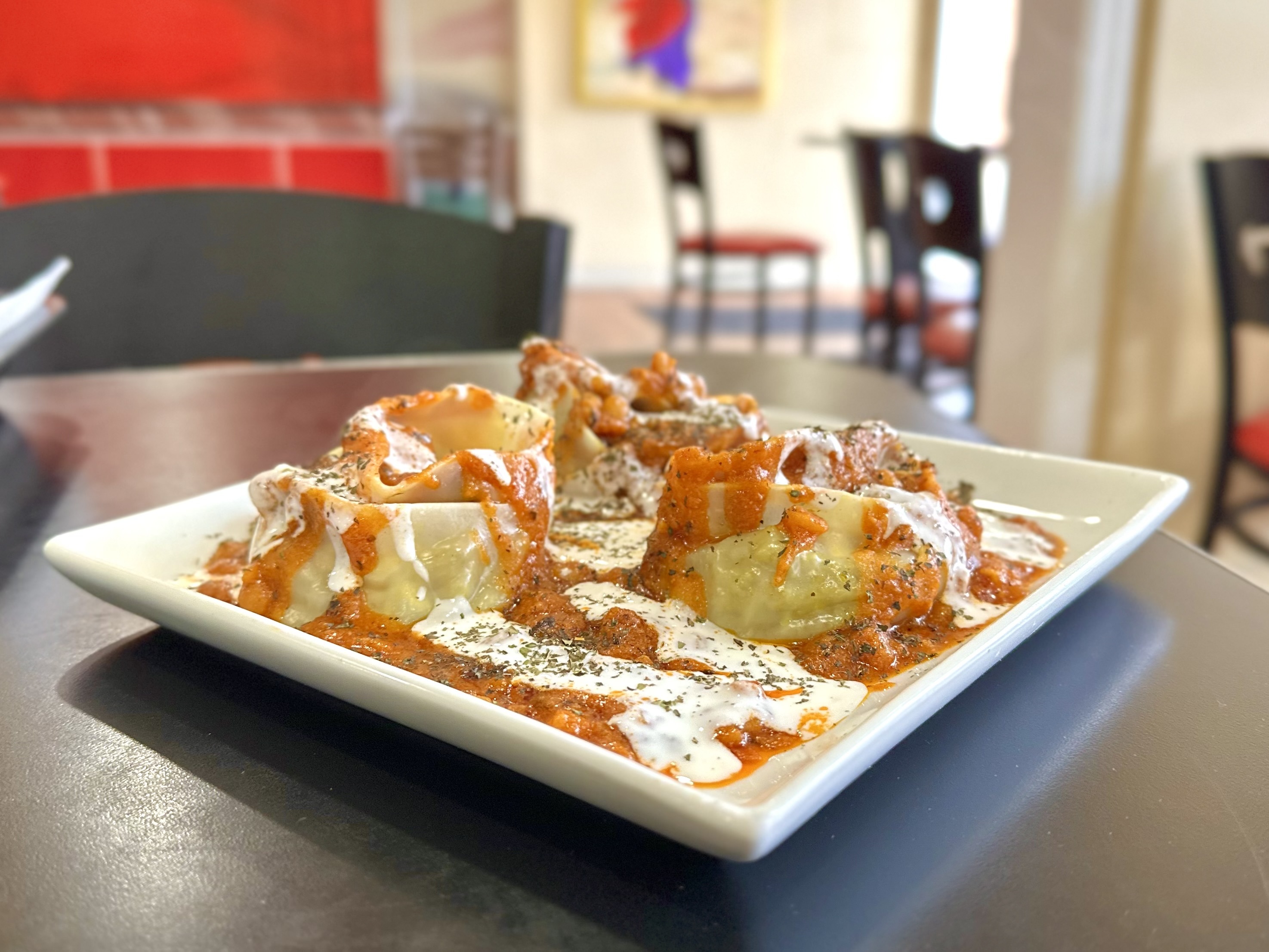
Afghan Kabab House
Pittsburgh’s destination for Afghan cuisine is the place to go for savory kabob platters and appetizers like burani badanjan, which is slow-cooked eggplant in a luscious tomato sauce. Kabab House’s tandoori chicken wings are among the best in the region; they’re fall-off-the-bone tender and offer a building heat that gets better (and bolder) with every bite.
The Carnegie restaurant features mantu, the dumpling of Afghanistan, handcrafted by Gul Ghoati, who arrived in Pittsburgh as a refugee. Preparing mantu is labor-intensive, so it’s best to call ahead to make sure her aromatic, texture-rich handiwork is offered at the small restaurant on any given day.
231 E. Main St., Carnegie; kababnow.com
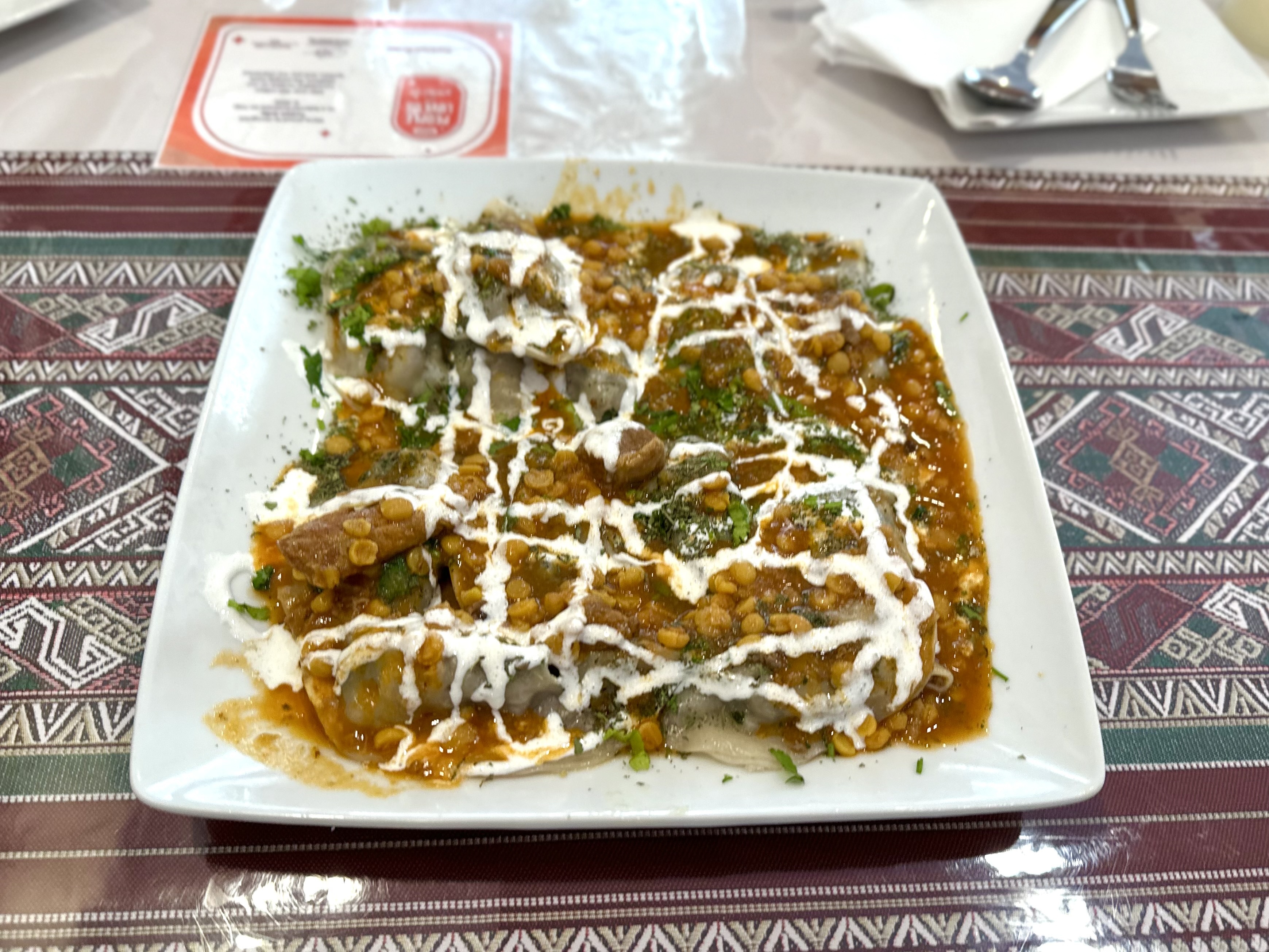
Aria Persian Cuisine & Turkish Grille
This lively Oakland restaurant melds Afghan and Persian dishes on one menu and Turkish offerings on another, all under the same roof. Saffron and barberry add blasts of flavor to dishes such as slow-braised chicken and tender lamb shanks.
The mantu are three-biters stuffed with a mix of seasoned ground beef and lentils, with a nice note of onion lingering in the background.
272 Melwood Ave., Oakland; ariapersiancuisines.com
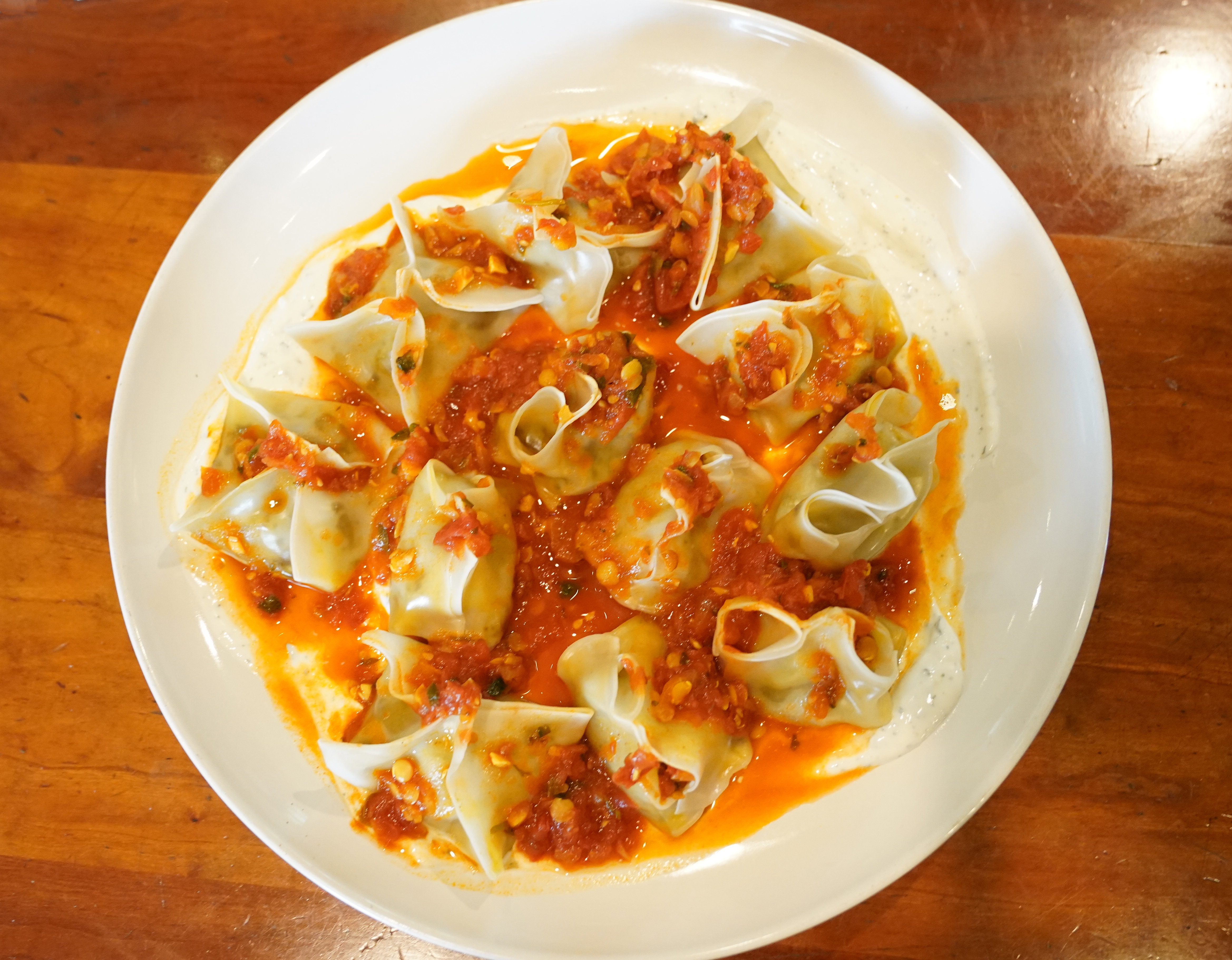
The Afghan community is still fairly small in Pittsburgh, with around 1,500 refugees and immigrants who resettled here within the last decade. So if you don’t know a lot about its cuisine, it’s understandable.
Yet many of its flavors and ingredients are familiar to those who enjoy foods from other cultures, and a few traditional Afghan dishes could even be mistaken by the uninitiated for the curries, noodles, and rice and meat dishes found in China, India and parts of the Mediterranean.
One plump and delicious example is the savory dumpling known as mantu.
A variation of the steamed Chinese dumpling or Korean mandoo, the hand-rolled dough bundles piled high on platters in Afghanistan are stuffed with ground meat and vegetables (usually onion), and served with two toppings: a tangy yogurt sauce kissed with garlic and dried mint and tomato-based sauce spiced with turmeric and chili.
As relayed in “Parwana: Recipes and Stories from an Afghan Kitchen” by Durkhanai Ayubi (Interlink Books, $35), mantu are thought to have originated in Central Asia, in territories that belonged to the Mongolian Empire. The dumpling then traveled to Turkey and, as it grew in popularity, made its way via the fabled Silk Road into Afghanistan, where it was adapted to local palates and culture.
Today, mantu offer not just a warm and gently spiced taste of Afghanistan, with prized spices such as chili, turmeric, cumin, pepper and nutmeg at the forefront, but also an expression of the country’s hospitality.
“The highest tenet of eating in Afghanistan,” Ayubi writes, “perhaps its holy grail, is the hospitality that surrounds it. Unexpected guests are treated with the utmost care and attention; even those who have very little to share will ensure their guests are always treated to the best.”
Folded by hand into snug, flower bud-like dumplings, mantu often are made for special occasions such as birthdays and holidays because they’re pretty labor-intensive. Their intricacy — the dough wrappers shouldn’t overpower the filling, and vice versa — also means it can take many tries before the process is burned into muscle memory, even for those who started learning at their mother’s side as children.
Mastoorah Fazly, who immigrated to Pittsburgh in 2016 and now helps run the Afghan-owned catering company Zafaron, watched and learned the art of mantu making from her mother, Nafas Gul, as a girl in Afghanistan. But she didn’t make them on her own until she was about 18 — with help from YouTube videos and that gift to busy cooks, commercially made dumpling wrappers.
“Most people want to make a good shape,” the 34-year-old says. That takes some finger finesse.
Afghans enjoy food with different influences, Fazly says, but the county’s most popular meal is also its national dish: Kabuli pulao, a beautiful and balanced rice dish made with carrots, raisins, almonds, pistachios and a delicate blend of spices. But mantu, which are often made with family and friends, are a very close second.
Fazly doesn’t hesitate when asked why dumplings are such a popular Afghan food.
“In my eye, it’s a good food, and it’s also a traditional food from a long, long time ago in Afghanistan,” she says. “And it’s very delicious!”
Ground beef is most commonly used in the filling, but ground lamb is also popular. Whatever the cook chooses, the meat is gently perfumed with traditional Afghan spices that might include coriander, curry, turmeric, black pepper and/or cumin, depending on the family recipe.
While home chefs in every part of the country make mantu, “everybody has their own special way to cook it,” Fazly explains. She, for instance, uses only seasoned ground chicken as filling when cooking for her immediate family because her kids don’t like red meat.
Her clients at Zafaron, conversely, can expect ground beef or lamb.
The business grew out of a sewing class Fazly participated in when she moved here, followed by a 2019 interactive cultural/culinary performance piece curated by actor and playwright Molly Rice called “Khūrākī,” which means “eat” or “meal” in the Dari language.
Some Afghan cooks still make mantu dough the old-fashioned way — by hand — if they have time. They sometimes use a pasta maker, Fazly says, because recipes call for it to be rolled out in big, super-thin sheets that are then cut into squares.
But really, unless dough-making is an occasion in itself, most take advantage of ready-to-use wrappers because scratch dough requires serious time. “And these days, everything is easy,” Fazly admits.
That certainly goes for the traditional white (yogurt) and red (tomato-based) sauces that add layers of flavor and richness to a platter of dumplings. Both are so simple they can be prepared while the mantu are steaming.
They’re not an “everyday” food, but the Whitehall resident says she makes the dumplings at least once or twice a month, and more often as a side dish if they’re having friends over or throwing a party. Her 10-year-old daughter, who loves to cook, usually helps her.
“But my son? He just likes to eat!” she says, laughing.
Fazly says her daughter often makes her own shapes instead of the traditional flower bud-like bundles a seasoned cook strives for.
“She’ll ask, ‘Mom, is it necessary to be like your shape?’ And I say, ‘Yes, if you can.’ ”
But no matter what they end up looking like, she says they all taste the same — delicious.
Pre-recipe tips
Ready to try mantu in your own kitchen? Here are some tips:
• If you’re ambitious, you can make wrappers from scratch by hand or in a stand mixer. (All you need is flour, water and oil.) Roll the pastry out into a paper-thin rectangle and then cut it into 4-inch squares.
But be forewarned: The process is tricky and takes some practice to master. It’s also incredibly time-consuming. Pre-made dumpling wrappers are available in any Asian market or larger grocery store are more practical for beginners.
• To cut down on time, make a party of it by enlisting family members or friends to help fill and fold.
• Since this recipe makes dozens of mantu, you will need a large steamer pot to steam them. (A two-tier stainless-steel steamer at Oriental Market off McKnight Road in Ross costs $45.99.)
• For a smooth, lump-free filling, use a food processor to finely mince the onions.
• While assembling, be sure to cover both the wrappers and filled dumplings with a damp cloth or plastic wrap so that they don’t dry out before cooking.
• Make sure the mantu are not touching each other in the steamer, or they could end up sticking together. You also need to lightly oil the basket to prevent the bottoms from sticking.
• Cooking for a party or other event? Both the filling and sauces can be made a day or so ahead so all you have to do on the day of is fill, fold and steam the dumplings.
• To keep cooked mantu warm until serving, place in a warm oven covered with a sheet of oiled aluminum foil.
• While mantu are traditionally filled with ground meat, it’s OK to go vegetarian. The filling in Ayubi’s recipe is made with carrot, cabbage and sauteed onion.
• After saucing the dumplings, add a garnish. Cilantro or fresh mint is ideal if you have it, but you can use chopped parsley in a pinch. “Just something green for a good mix of decoration,” says Fazly.
Recipe: Afghan mantu
PG tested
This recipe makes about 50 mantu. I used ground lamb and pre-made wrappers.
For filling
2 tablespoons vegetable oil
¾ pound ground lamb or beef
2 cups diced onion
3 garlic cloves, minced
Salt to taste
2 teaspoons cumin
2 teaspoons ground coriander
1 teaspoon chili powder
¼ teaspoon turmeric
¼ teaspoon cardamom
Generous pinch of nutmeg
2 tablespoons chopped cilantro
1 package wonton wrappers or homemade mantu dough
For mint sauce
1 cup plain yogurt
1 tablespoon dried mint, or to taste
1 clove garlic, minced
Salt to taste
For sauce
1 tablespoon oil
¼ cup diced onion
2 tablespoons tomato paste
2 tomatoes, chopped, with juice
⅛ teaspoon turmeric
¼ teaspoon chili powder
1 clove garlic, minced
2 teaspoons chana daal (yellow split peas) soaked overnight
Salt to taste
In large saucepan over medium heat, heat the oil. Add ground lamb or beef to the hot pan and break into large pieces with a wooden spoon or spatula. Cook, stirring often, until meat is browned.
Add salt and diced onions, and continue cooking until onions soften and cook down, 3-4 minutes.
Now add spices and stir to combine well. Cook seasoned meat and onion mixture for a few minutes, then taste and adjust seasonings.
Stir in cilantro, then set aside to cool.
Once it has cooled, it’s time to fill the wrappers. Place a wrapper in your nondominant hand and spoon a generous spoonful of cooled filling into the center. Using your finger, brush the edges with water.
Pick up two diagonally opposite corners and bring together over filling, then pinch to seal. Repeat with the other two corners so you have a small, sealed, square-ish parcel. Then, bring the ends together to create an almost oval parcel with two ends pinched together. (It will resemble a flower bud.)
Cover with plastic wrap or a damp dish towel (to keep dumplings from drying out) and continue with remaining ingredients.
When ready to cook, boil water in the bottom of a large steamer. Lightly coat the steamer tray with oil or nonstick spray. Gently add mantu, one at a time, making sure they do not touch. (They will expand slightly while cooking.)
Steam in batches for 10-15 minutes, or until the wrappers are slightly translucent and feel firm.
While dumplings are steaming, make yogurt and tomato sauces.
Combine yogurt, mint and minced garlic in a small bowl. Add salt to taste and adjust seasoning, if desired. If it’s too thick, thin with a bit of water. Set aside.
Make tomato sauce. Add 1 tablespoon of oil to a large saucepan and heat until sizzling. Add onion and saute until translucent, about 2 minutes.
Add tomato paste, and allow it to cook down for a minutes or so to caramelize. Add chopped tomatoes with juice and turmeric, chili powder and garlic and stir to combine. Add a little water and bring to a simmer, then stir in the chana daal and season to taste with salt.
To serve, spread a layer of yogurt sauce on a large serving platter. Top with steamed mantu, then more yogurt sauce and then the tomato-lentil sauce. If desired, drizzle a little olive oil on top and sprinkle with dried mint.
Serves a crowd.
— adapted from fatimasfabulouskitchen.com
Gretchen McKay: gmckay@post-gazette.com.
Hal B. Klein
Gretchen McKay
Hal B. Klein
Lucy Schaly
Justin Guido
Sebastian Foltz
James Hilston
Laura Malt Schneiderman
Advertisement
Advertisement